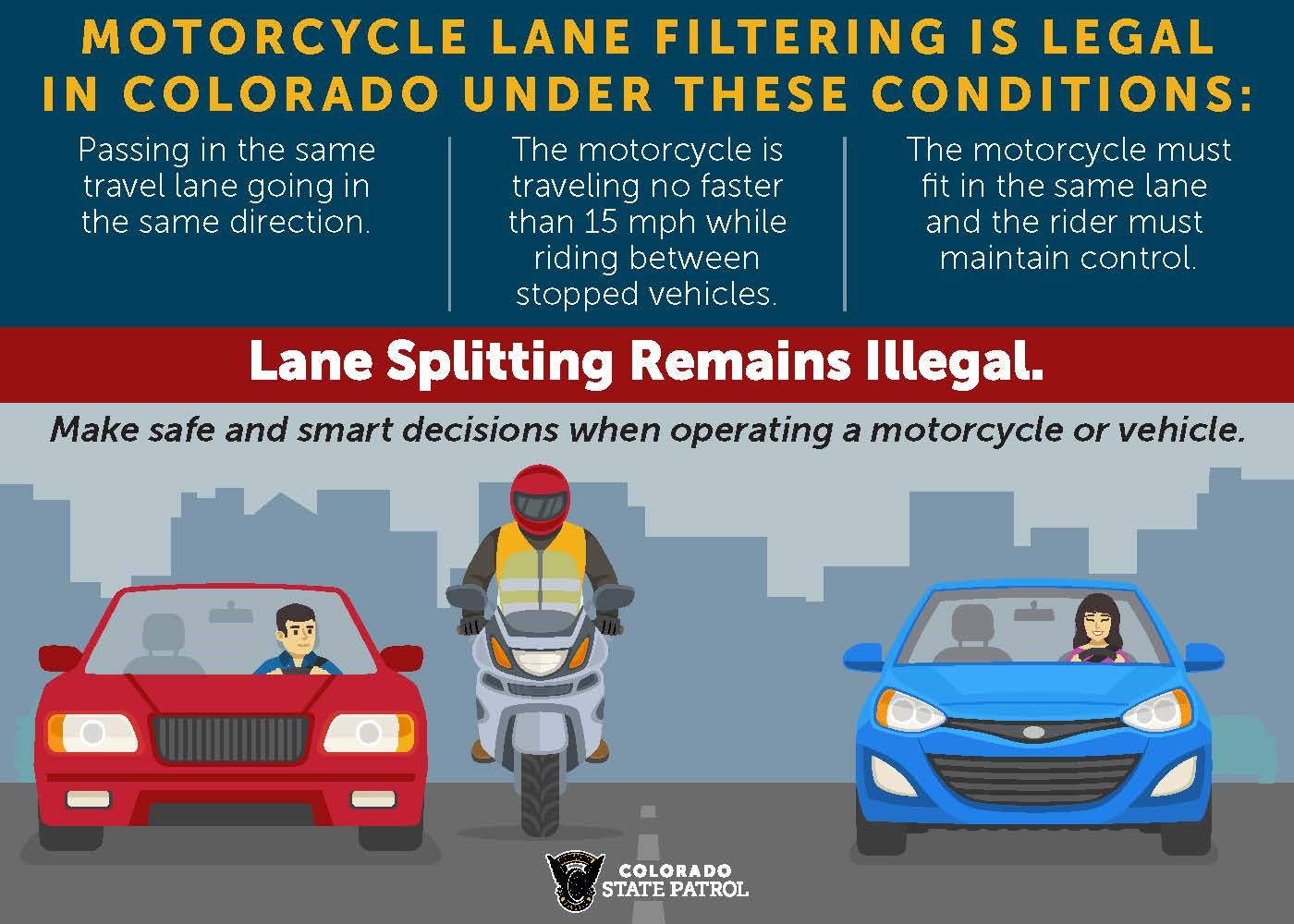(COLO) – Lane filtering will become legal in the State of Colorado on August 7, 2024. While lane splitting and filtering have long been controversial, motorcycle riders and drivers need to understand the rules going into effect to ensure a safe experience on our shared roadways.
Lane splitting is prohibited in Colorado, and it is the act of operating a motorcycle between two rows of moving traffic or stopped traffic traveling in the same direction. It typically involves riding the motorcycle down the painted line dividing the lanes on either side.
Lane filtering is legal on August 7. Lane filtering is the act of a rider passing a vehicle in the same lane but only when that vehicle and any traffic in adjacent lanes are at a complete stop. This maneuver will likely be most common at stop lights or gridlocked traffic and will legally allow riders to navigate toward the front of the line, avoiding being sandwiched between two vehicles.

One of the biggest differences between lane splitting and lane filtering comes down to the movement of the surrounding vehicles. It’s important to note the differences between these practices and the rules associated with Colorado’s filtering law.
According to Colorado’s new filtering law, five rules must be followed to filter:
- The vehicles a rider wants to pass must be at a complete stop.
- The lane must be wide enough to fit the vehicle and motorcycle while passing.
- The motorcycle must go 15 mph or less.
- The rider must pass safely and control the motorcycle.
- The rider must pass on the left and not enter the oncoming traffic lane.
Changes to road rules take time to catch up with the vast motoring public. However, Coloradoans need to know that lane filtering is not new; it is just new to Colorado. Limited forms of filtering are already legal in Arizona, California, Hawaii, Montana and Utah. California is the only state that permits lane splitting.